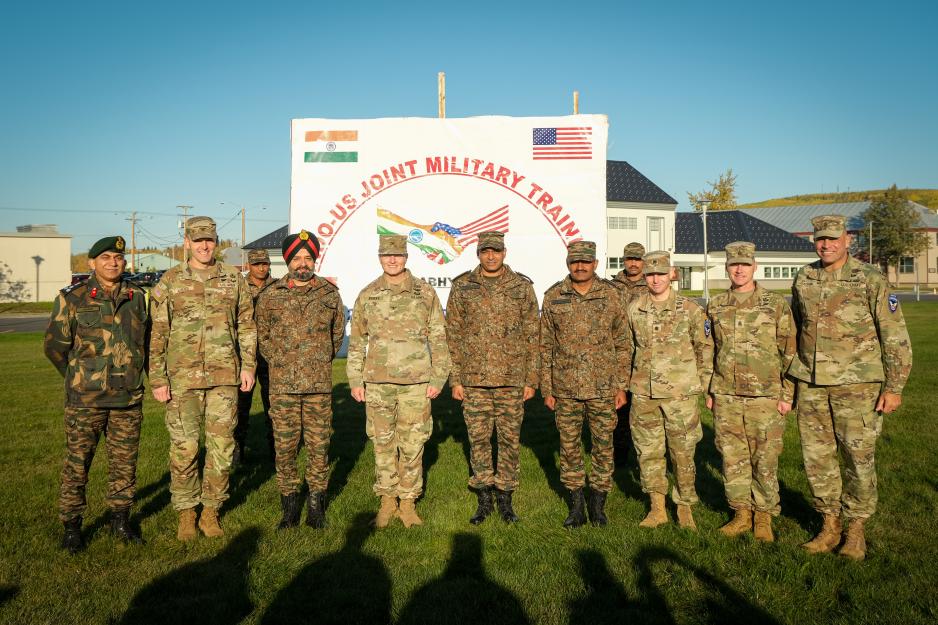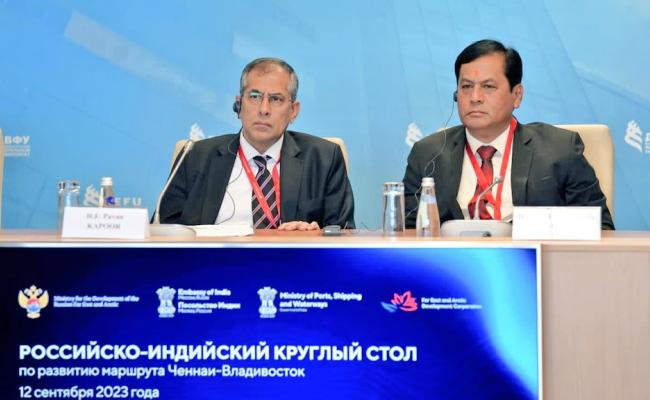Op-ed: The Polar Tiger: Why India Must Be Included in the New U.S. Arctic Defense Strategy

Officers and Non-Commissioned Officers of the Embassy of India, U.S. Army and Indian Army during the opening ceremony of Yudh Abhyas 23 at Fort Wainwright, Alaska, Sept. 25, 2023. (U.S. Army photo by Sgt. Keon Horton).
The opinions expressed here belongs to the author and do not represent the views of High North News.
At the recent Arctic Circle Assembly, U.S. Deputy Assistant Secretary of Defense, Iris Ferguson announced that an update to the Department of Defense’s new Arctic strategy is scheduled to be released at the beginning of 2024.
This updated strategy represents a valuable opportunity for the U.S. to consider how best to work with international partners including India to protect its own climate security and long-term interests for the mutual benefit of both countries.
India could be a key strategic partner for the U.S. in its efforts to protect the Arctic, which is currently threatened by the increased commercial and military presence of Russia. This is because India has major climate, socio-economic, and security interests in the Arctic which could align with the U.S. through appropriate climate-centric cooperation.
Yet, the U.S. at present does not include India in its Arctic strategy. This omission has allowed Russia to establish closer ties with India on Arctic affairs. It is therefore critical that the role of India in securing long-term U.S. Arctic aspirations be reflected in this updated U.S. Arctic defense strategy.
India is becoming a major Arctic power with the capacity to assist the U.S. in protecting the Arctic. In 2022, India released its first Arctic policy, which illustrates the country’s vested interest in conserving the region.
Also read (The article contiunes)
The policy recognizes that “changes in the Arctic, especially melting Arctic ice, can be highly disruptive for national development, sustainability of over 1300 island territories and maritime features, and the welfare of 1.3 billion Indians.” A recent study found that there is a strong connection between Arctic sea ice loss and extreme Indian Summer Monsoon (ISM) rainfall events.
The Indian Summer Monsoon has a crucial indirect effect on India's economy, as it provides 80% of India’s rainfall. Therefore, the protection of the Arctic is essential to the long-term socio-economic and security interests of India.
Protection of the Arctic is also in the interests of the U.S. due to its desire for a peaceful and stable Arctic to prevent further geopolitical tensions in the region. India’s emerging role in the Arctic therefore presents an opportunity for cooperation with the U.S, provided the appropriate defense policy is put in place.
However, U.S. outreach to India on the Arctic has been minimal, as reflected in the fact that no prior U.S. policy document has considered the implications of India’s role in the Arctic for its own climate security objectives.
This has led Russia to begin the process of courting India to support (and be part of) its efforts to commercialize and militarize the region, in exchange for access to emerging trade routes.
Accelerates the loss of Arctic sea ice
Russia’s strategy focuses on using the Northern Sea Route for Russian companies to deliver strategic energy resources to global markets. Russia has entered into negotiations with India and China for the supply of icebreakers, which are crucial for the increase of traffic along the Northern Sea Route.
This commercial expansion into the Arctic accelerates the loss of Arctic sea ice, therefore posing a threat to U.S. climate security interests. India's participation in the Russian Vostok Military Drills and its arms procurement from Russia further adds to these risks by destabilizing the Arctic through increased military activity, which in turn exacerbates sea ice loss.
The U.S. has expressed concern at Russia’s interest in the Arctic in its prior defense strategy, but has yet to consider whether it could work with India to mitigate Russia’s influence in the region.
A science-based approach to the Arctic is essential, which necessitates U.S. collaboration with India to realign defense strategies to mitigate the consequences of Russia’s actions on climate security.
The release of the new Arctic defense strategy represents an opportunity for the U.S. to integrate the India dimension into its climate security considerations. U.S. cooperation with India is possible given both State’s long-term interest in climate protection of the Arctic.
This would be of benefit to both States, in that the U.S. would gain new partners in its efforts to contain Russia, while India would gain enhanced international legitimacy regarding its role in Arctic governance. However, the first step to any further relationship in this area will be the inclusion of India in the new U.S. Arctic defense strategy.



